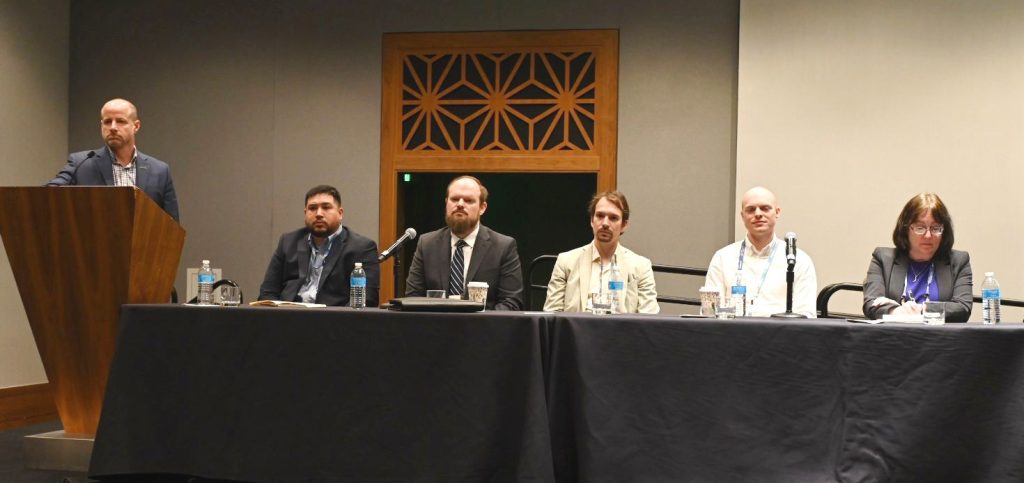Evolving Paratransit Services
4/16/2025

As a service, it is essential for paratransit to evolve to meet the ever-changing needs of its customers, and a panel at APTA’s Mobility Conference examined strategies for integrating paratransit with other services and implementing same day service.
Research has helped to uncover ways to create efficiencies in this particular mode. Todd Hansen, senior transportation planner for the KFH Group said the goal for agencies “is to help increase efficiency of their overall demand response service, increase productivity through greater shared rides, and then lower the cost per trip that they have.” Some of the answer lies with comingling trips with an agency’s regular services. Steve Kuban director of business development for the Routing Company said while modern scheduling and dispatch platforms are a par of the process, so is multimodal integration. “Maybe move riders a mile, get them onto an accessible transit station where they are able to do the rest of their day,” he suggested.
Work in the field is already happening with on-demand paratransit, and much can be learned from analyzing results. In Seattle, Mitchell Brown, the Metro Flex and Access on Demand program director for King County Metro Transit, conducted one pilot program with 33 customers taking some 1,000 on-demand trips after his customers described how such a service might positively impact their lives. The trips averaged approximately five miles each, with an average wait time of 30 minutes. “Not surprisingly, customers loved it,” Brown said. The agency is now in phase two of the study, with a larger number of customers and travel miles, attempting to learn how it can use non-dedicated service providers to help drive cost down and better drive efficiency.
In the San Francisco Bay Area, Tina Dubost, manager, Accessible Services, for San Mateo County Transit District, is running a same-day paratransit service. The agency found many customers still pre-planning, with many reservations at 9:00 a.m. for trips at 1:00 p.m. or later in the day. “Things do come up at the last minute. People need to go places and so we wanted to give people the option,” said Dubost The agency, she noted, wanted to be careful not to deny too many trips. It set a higher price: $10 for regular trips and $8 for low-income riders. She said contractors loved it, but her agency received surprisingly little feedback from customers and will need to address marketing efforts.
Overall, paratransit continues to struggle with price per trip. But, with better routing, research, integrating with regular transit trips, and a move to more same-day trips, costs could ultimately be reduced and customers be better served.